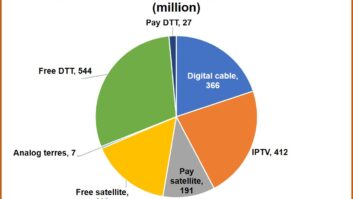
The Latin American pay TV services market is expected to continue its growth due to the rise in postpaid subscriptions for direct-to-home (DTH) TV. The demand for value-added services such as HD and video on demand (VoD) is further spurring market development.
New analysis from Frost & Sullivan, Latin America Pay TV Services Market, finds that the market earned revenues of $20.43 billion in 2013 and estimates this to reach $30.91 billion in 2019. The number of subscribers in the region will touch 86.1 million by 2019 from 55.9 million in 2013, hitting a household penetration rate of 57.9 per cent. The study covers cable TV, DTH, multichannel multipoint distribution service and IPTV.
“As customers increasingly expect higher video quality and content diversity, Latin American operators are expanding the line-up of HD channels at affordable prices,” said Frost & Sullivan Information and Communication Technologies industry manager Renato Pasquini (pictured). “While some companies have already packed their portfolios with HD channels, others are speeding up the transition from standard-definition to HD to boost incremental revenues per user.”
Operators are looking to combine voice, data, video and mobile services in bundles to lower service costs for their customers. However, the heavy taxes levied on pay TV services, especially in Brazil, and the low returns on network deployments in remote areas and small cities challenge operators’ ability to offer convergent services.
The next era of pay TV will, therefore, coincide with the introduction of new network architectures that place content close to the user. As a result, VoD is likely to become one of the main modalities for consuming video, enabling a look and feel closer to internet-delivered services than traditional content delivery. Hence, the over-the-top (OTT) segment, though currently not a threat, may eat into the market share of pay TV services depending on the quality of broadband offerings and attractiveness of content.
“In a bid to combat this, IPTV and a considerable number of cable TV providers will include VoD services on their set-top box by 2019,” noted Pasquini. “The ensuing competition among cable TV, DTH and IPTV operators, especially in Brazil, Chile, Colombia and Mexico will improve the availability and quality of services, add value to service offerings, and enhance price points.”
This story also appears on IBC’s Content Everywhere.







